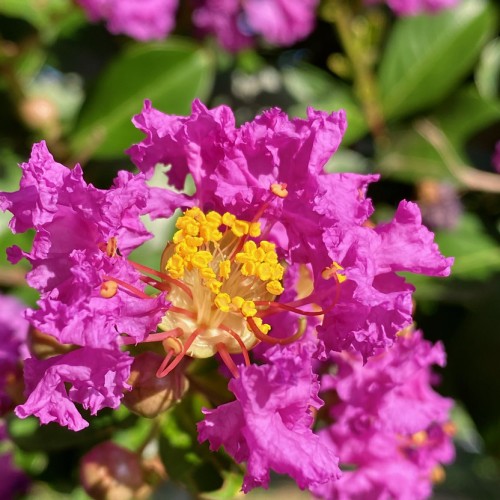
crape myrtle
Lagerstroemia 'Bicolor'
Cycle:
Perennial
Watering:
Average
Hardiness Zone:
6 - 9
Flowers:
Flowers
Sun:
Full sun
Leaf:
Yes
Growth Rate:
Low
Maintenance:
Moderate
Salt Tolerant:
Yes
Care Level:
Medium
watering
Crape myrtle (Lagerstroemia 'Bicolor') should be watered when the soil feels dry, about 1 or 2 inches deep. Aim to water once every 5-7 days, depending on the weather. During hotter months, the frequency of watering should increase. Be sure to check the soil before watering, as overwatering can easily occur. It is important to make sure the soil is not water-logged or overly saturated for long periods of time. A slow deep soak once every week is ideal.
sunlight
Crape myrtle (Lagerstroemia 'Bicolor') should be grown in full sun to ensure proper growth. They should receive at least 6-8 hours of direct sunlight each day for optimal flowering and health. It is important to avoid long periods of shade as this could lead to reduced flowering and poor growth. When planting crape myrtle, ensure that the location receives maximum sun exposure throughout the day, with no trees or structures blocking the sunlight. Additionally, for best results, it may be beneficial to provide some afternoon shade in very hot climates.
pruning
Crape myrtle (Lagerstroemia 'Bicolor') is typically pruned in late winter or early spring (February/March). Light pruning is best, as heavy pruning can cause unhealthy regrowth and a decreased flowering display. Pruning should include removing any dead growth and thinning out the stems, leaving only the strongest, leaving lateral branches in place if possible. When the shrub has an open form, prune back outer stems only, being careful not to thin too much or remove more than 25–33% of the plant’s overall foliage. This keeps less of the mature wood intact, promoting stronger flowering. For a denser shape, prune off 1-third to 1-half of the new growth in late winter to early spring and avoid removing old wood as much as possible.
